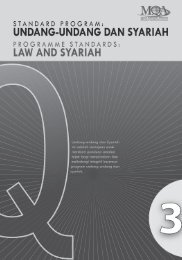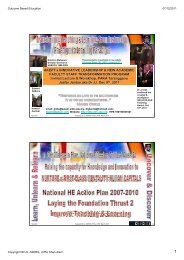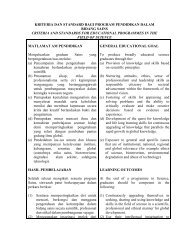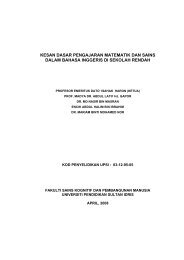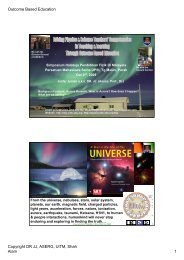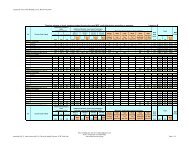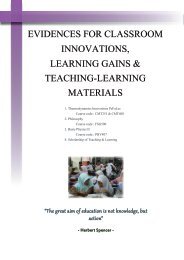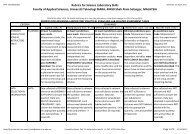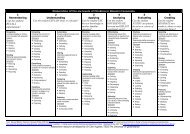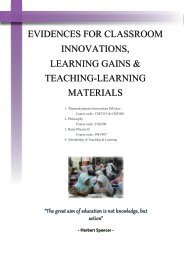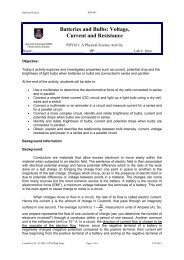FSG-PPT-060610 (pdf) - DrJJ - UiTM
FSG-PPT-060610 (pdf) - DrJJ - UiTM
FSG-PPT-060610 (pdf) - DrJJ - UiTM
You also want an ePaper? Increase the reach of your titles
YUMPU automatically turns print PDFs into web optimized ePapers that Google loves.
Outcome Based Education 07/06/2010http://drjj.uitm.edu.myq 3Figure 2 shows a configuration of charged particles q1=+q, q2= +q, andq3= -q. The charges are separated by the distances shown. Point B is ata distance d below charge q1 and point A is halfway between chargesq1 and q2.a) Draw and label the electric force diagram, F 12, F 13exerted on chargeq 1by charge q 2and by charge q 3respectively.b) Draw and label the electric field lines E 1(created by charge q 1), E 2(created by charge q 2) and E 3(created by charge q 3) at point A andpoint B respectively,c) Write down the magnitudes (strength) of the Coulomb’s forces, F 12,and F 13in terms of the electric constant k, the charge q and theseparation d. (remember to use subscripts to label the charges)dddAdBFigure 2q 2q 16/7/2010Copyright <strong>DrJJ</strong>, ASERG, <strong>FSG</strong>, <strong>UiTM</strong>. March 2010 1871. In OBTL, assessment is about making a judgement and providing agrade to how well the CLOs have been achieved – Outcomes-basedbased.2. Designed to align with the CLOs to be assessed – ConstructiveAlignment.3. Assessment tasks are selected to provide the means for students topresent evidence of their learning and achievement of the CLOs.4. Student performance is judged on evidence of achievement of theCLOs (criteria) presented in the assessment task - criterion-referencedreferenced.6/7/2010Copyright <strong>DrJJ</strong>, ASERG, <strong>FSG</strong>, <strong>UiTM</strong>. March 2010 188Copyright DR JJ, ASERG, <strong>UiTM</strong>, Shah Alam 94




